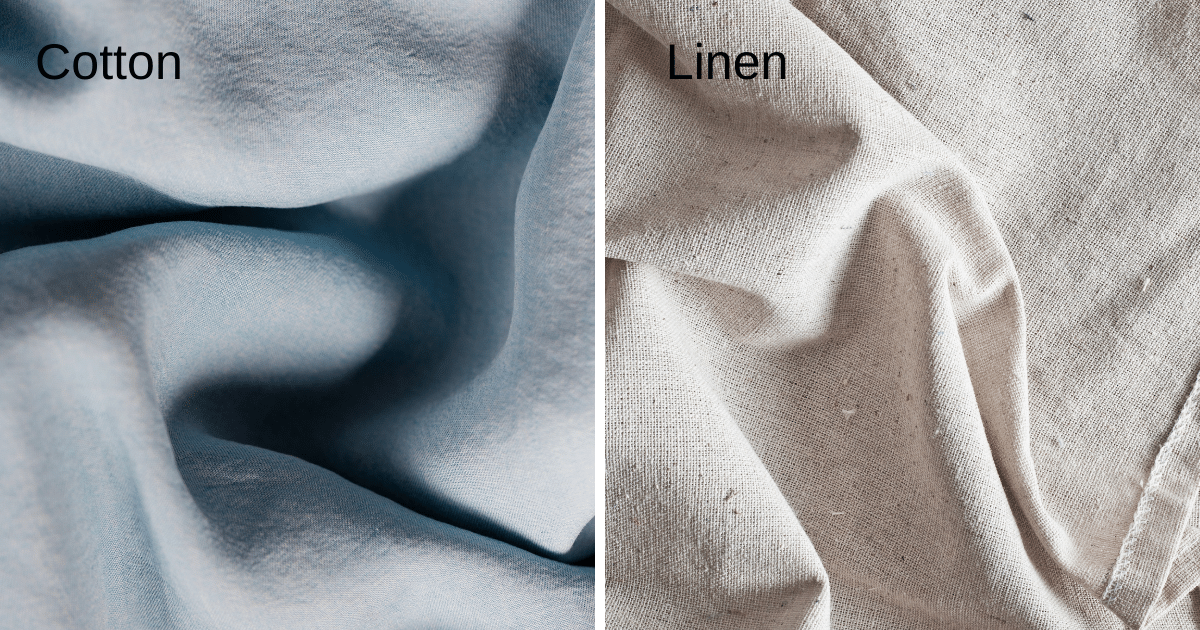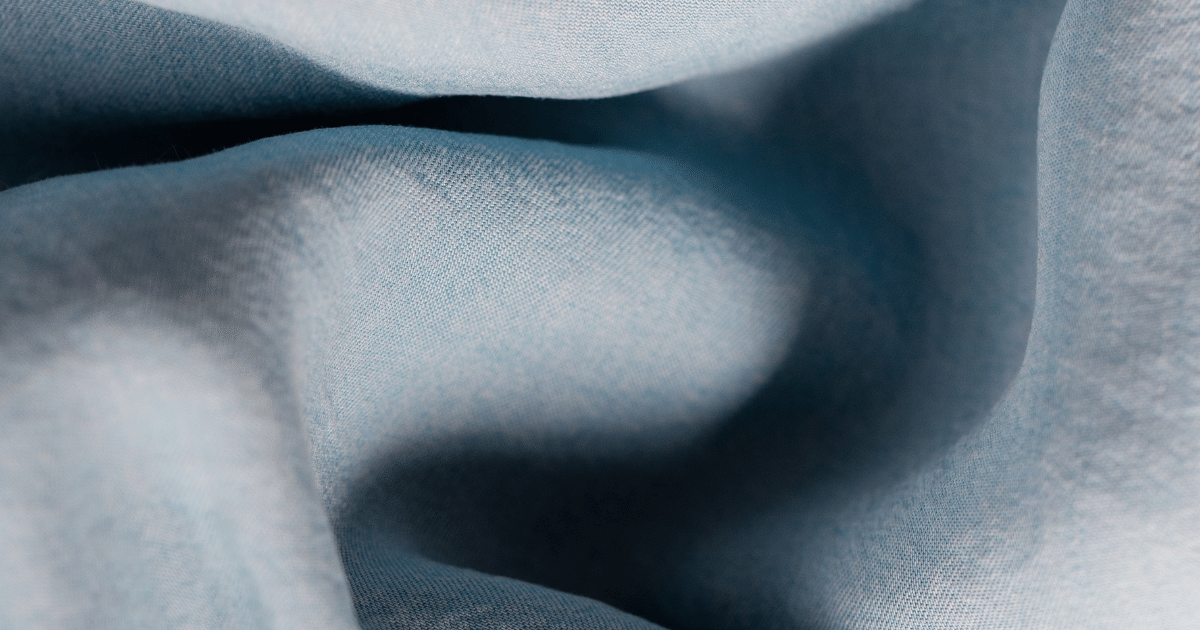Linen and cotton are popular natural fabrics in the current market, and you can see their use in everything from art to fashion and decorative pieces. Many people cannot tell the difference between linen and cotton; some even use them interchangeably.
Others insist that there is no difference in which one you choose to use. But is this really the case? This article looks at these natural fabrics and compares their performance across various criteria. The results may end up surprising you.
Linen and Cotton Fabrics
Linen and cotton are natural fabrics; textile manufacturers produce linen fabric by processing the fiber from the source plant. Linen fabric is derived from the stem of the flax plant, while cotton comes from the matured bolls of the cotton plant.
The fabrics of both plants, however, have slight differences. Linen is about 30% heavier than the typical cotton fabric and can absorb up to 20% of its weight when soaked. It has a crisp feel when it’s still new but can last up to 30 years of use.
On the other hand, most cotton fabrics are lightweight and highly comfortable to the skin, even when new. Cotton is much more absorbent than linen and can soak up to 25% of its weight. Cotton also has a little more stretch and flexibility than linen. But it is less durable and usually lasts around five years of use.
Cotton vs. Line – Method of Production

Although cotton and linen come from plants, they are produced differently. The production of linen is much more complex and takes longer than that of cotton. Here are the production process of both fabrics:
Linen Production Process

After flax plants are harvested and dried, various workers remove the seeds and leaves through the rippling process. Afterward, they leave the plants to ferment partially under weather conditions before retting.
The linen fiber is extracted from the stems of the flax plant through mechanical and chemical retting processes. The retting process is the most crucial part of linen production as it determines the quality and quantity of the linen produced.
Retting involves partially rotting the flax stem through water immersion. Textile manufacturers in different countries use various retting methods, but all ensure the water is non-saline and that the water volume allows the stem bundles to float. After retting, the manufacturers process the fibers further to get fine linen fabric.
Cotton Production Process

On the other hand, cotton comes from the matured bolls of cotton plants. A process called defoliation is used to separate the bolls from the plant. Once defoliation is complete, another machine transforms the bolls into bales. The bales make their way into special machines, where textile workers further process them into fibrous threads before finally weaving them into fabrics.
The Texture of Linen and Cotton
Texture refers to the structure of interwoven threads that make up the textile fabric and how they ultimately feel to the touch. The nature of the plant fiber usually influences the way a fabric feels.
Linen has a coarser texture than cotton because flax fibers are rougher than cotton fibers. However, with repeated washing, linen can, in time, have a softer feel, although it will never be softer than regular cotton.
Although both linen and cotton are breathable and hypoallergenic, linen is better for those with allergies because of its lower thread count and looser weaves. These properties make it trap less dust and particles than cotton.
However, cotton is more comfortable to wear; hence, textile manufacturers prefer them when making baby clothes as their skin cannot always cope with the coarser linen fabric.
Linen and Cotton: Uses and Applications
Linen and cotton are commonly used types of natural fabrics currently on the market.
Previously, most linens were used for household items such as tablecloths, upholstery, furnishings, and curtains, while only 5% was used for fashion. This use has recently changed; about 70% of linen production is used for various fashion productions.
Fashion designers now make many modern suits, shirts, skirts, and gowns from linen; they are also used to produce aprons, threads, blankets, and bath towels.
Cotton is also widely used in the fashion industry. Designers use cotton for every type of clothing, from jackets and underwear to regular shirts. They are also used to make bedsheets, curtains, tablecloths, and other home decor.
Some cotton forms, such as cotton gauze, are also used in medicine to dress wounds. Many disposable diapers are also made from cotton because they are more comfortable for the delicate skin of babies.
Caring for Your Cotton and Linen Fabrics
Many people assume that linen and cotton require specialist care, but this is not exactly true. However, there are some precautions to take while caring for cotton. Always read the manufacturer care label when unsure of how to proceed.
Caring For Linen
Although you must pay attention to the fabric care label, here are some ways to take care of linen:
- You can wash your linen either by hand or with a machine. Dry Cleaning is not compulsory.
- Wash under low temperatures; use lukewarm or cold water and a gentle machine setting. Preferably, use a front-loading machine to protect the fabric better.
- You can tumble dry your linen fabric but remove them while the fabric is still slightly damp, so it doesn’t get too stiff. You can air dry the fabric until completely dry.
- You can iron linen using an iron set to medium heat; if the linen is dark colored, iron on the reverse side.
Caring for Cotton
Most types of cotton are relatively easy to care for. Here are some principles to apply when taking care of your cotton fabric:
- Wash cotton with either a machine or by hand. Set the machine to a gentle setting and use a mild detergent. Always wash cotton in cold water (preferably 30°C or below); this applies to shrink-prone cotton.
- It is preferable to air dry cotton fabric, but you can also use a dryer depending on the type of cotton (consult your manufacturer’s care label if unsure).
- Iron your cotton clothes while they are still damp, or use an iron with steam or sprinkle feature. Refer to the fabric care label for the appropriate iron setting.
- Ensure the fabric is dry and well-ironed before storing them to prevent mold and mildew growth.
